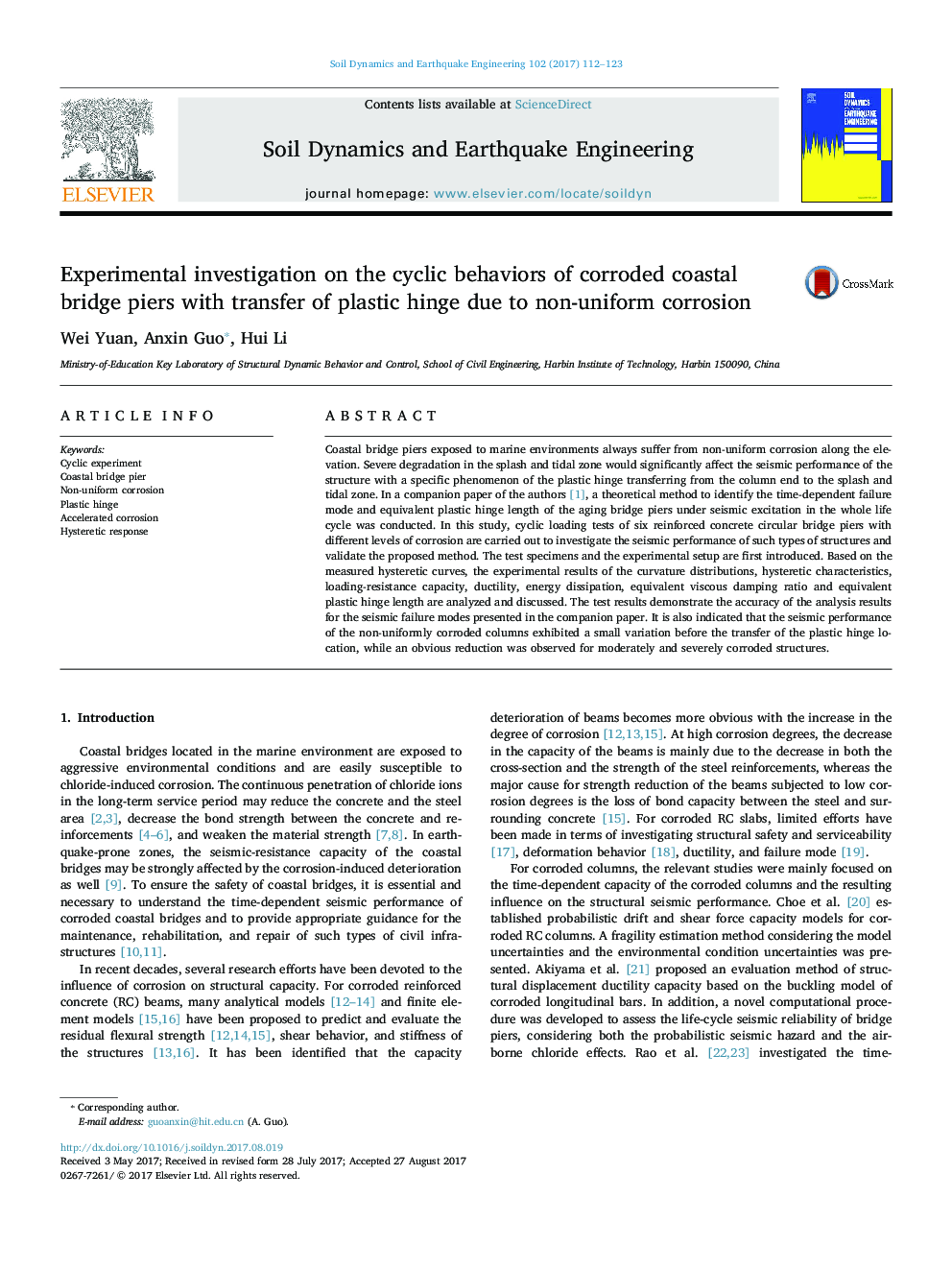| Article ID | Journal | Published Year | Pages | File Type |
|---|---|---|---|---|
| 4927069 | Soil Dynamics and Earthquake Engineering | 2017 | 12 Pages |
Abstract
Coastal bridge piers exposed to marine environments always suffer from non-uniform corrosion along the elevation. Severe degradation in the splash and tidal zone would significantly affect the seismic performance of the structure with a specific phenomenon of the plastic hinge transferring from the column end to the splash and tidal zone. In a companion paper of the authors [1], a theoretical method to identify the time-dependent failure mode and equivalent plastic hinge length of the aging bridge piers under seismic excitation in the whole life cycle was conducted. In this study, cyclic loading tests of six reinforced concrete circular bridge piers with different levels of corrosion are carried out to investigate the seismic performance of such types of structures and validate the proposed method. The test specimens and the experimental setup are first introduced. Based on the measured hysteretic curves, the experimental results of the curvature distributions, hysteretic characteristics, loading-resistance capacity, ductility, energy dissipation, equivalent viscous damping ratio and equivalent plastic hinge length are analyzed and discussed. The test results demonstrate the accuracy of the analysis results for the seismic failure modes presented in the companion paper. It is also indicated that the seismic performance of the non-uniformly corroded columns exhibited a small variation before the transfer of the plastic hinge location, while an obvious reduction was observed for moderately and severely corroded structures.
Related Topics
Physical Sciences and Engineering
Earth and Planetary Sciences
Geotechnical Engineering and Engineering Geology
Authors
Wei Yuan, Anxin Guo, Hui Li,
